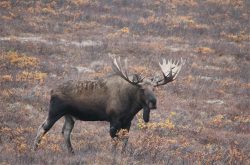
The Arctic’s dramatic changes — warmer winters, earlier springs, shrinking ice and more human development — are impacting native animals. Researchers have long been observing the movements and behavior of animals in this region, but it’s been difficult to discover and access these data for meaningful collaborations.
Now scientists from around the world have established the Arctic Animal Movement Archive, an online repository for data documenting the movements of animals in the Arctic and Subarctic. With this archive, scientists can share their knowledge and collaborate to ask questions about how animals are responding to a changing climate.
The global archive and several case studies on wildlife movement and behavior are described in a paper published Nov. 5 in Science.
“In terms of recent calls for more open science, platforms like this are a major leap forward in making valuable data discoverable and useful for researchers to address far more science questions than would otherwise be possible,” said project collaborator and co-author Laura Prugh, associate professor in the UW School of Environmental and Forest Sciences.
One of the case studies, led by Prugh’s lab at the UW, looked at the movement speeds of bears, caribou, moose and wolves from 1998 to 2019 and found that all species changed their movement rates in response to climate conditions — but with no consistent pattern. This inconsistency shows that responses of large mammals to climate change in the Arctic may not be straightforward to predict.
“This work has highlighted strong changes in movement rates in response to climate, but the reasons why animals are moving more or less are still not understood,” Prugh said. “I hope the work spurs future research to understand the ‘why’ behind our findings, and whether these changes are indicative of positive or negative climate change impacts.”
Movement rates are important to track because they can influence how effective animals are at finding food and other resources, when animals encounter predators, and how much energy they expend during different seasons. Additionally, large mammals in the Arctic are adapted to cold conditions and may experience heat stress due to warming temperatures, the authors explained.
Read more at UW News »
